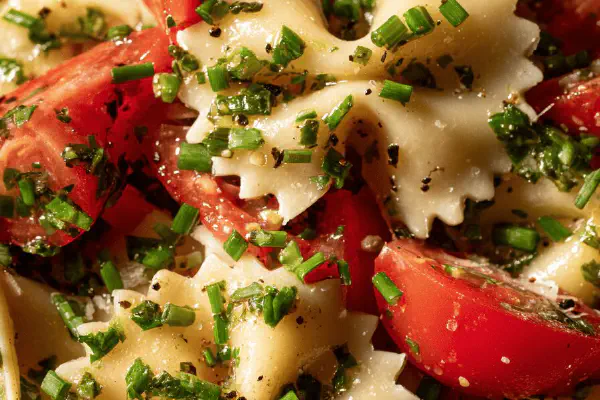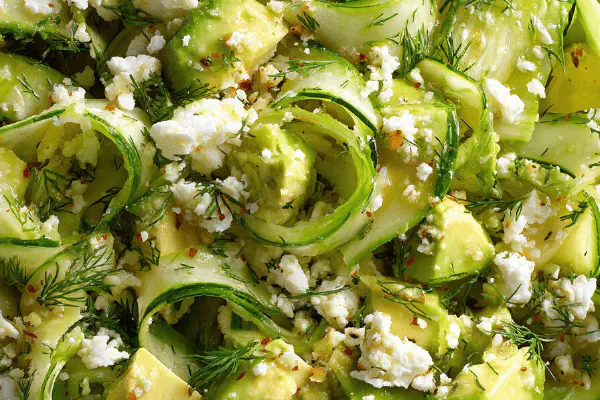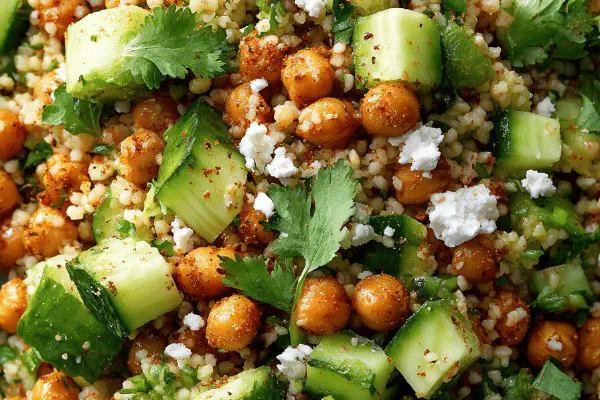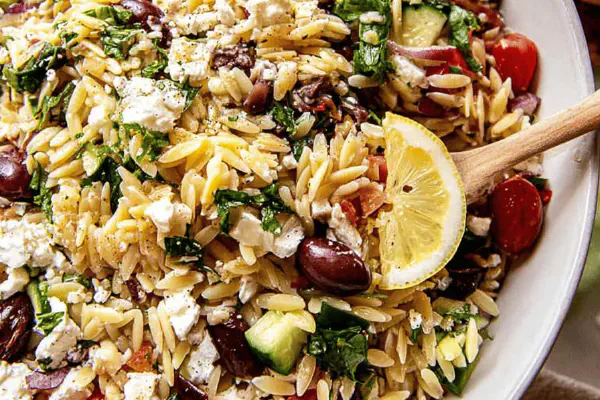Pasta Salad with Twist Gremolata

By Emma
Certified Culinary Professional
Ingredients
- 500 ml (2 cups) orechietti or farfalle
Gremolata
- 25 ml (1 1/2 tbsp) chopped fresh cilantro
- 1/2 garlic clove minced
- 5 ml (1 tsp) lime zest
- 5 ml (1 tsp) lemon zest
- 5 ml (1 tsp) grapefruit zest
- 1 large tomato diced, seeds removed
- 15 ml (1 tbsp) fresh lime juice
- 30 ml (2 tbsp) extra virgin olive oil
- 45 ml (3 tbsp) grated Manchego cheese
- 10 ml (2 tsp) chopped chives
- Salt and pepper to taste
About the ingredients
Method
Step 1: Cook Pasta
- Boil salted water. Cook pasta 12-14 minutes until al dente. Drain. Toss lightly with olive oil. Transfer to wide bowl. Let cool 15 minutes uncovered.
Step 2: Prepare Gremolata Mix
- In separate small bowl, combine chopped cilantro, minced garlic, lime zest, lemon zest, grapefruit zest. Stir well.
Step 3: Combine Ingredients
- Add gremolata mix to cooled pasta. Add diced tomato, lime juice, grated Manchego, and chopped chives. Season with salt and pepper.
- Mix thoroughly but gently. Chill 10 minutes if desired. Serve cool or room temp.
Cooking tips
Chef's notes
- 💡 Cook pasta just till al dente. Overcook and the salad turns mushy. Salt water well. Drain but leave some heat for olive oil toss. Prevents sticking. Let pasta cool uncovered. No cover or it traps steam. Steam means soggy pasta. Olive oil coats so herbs stick evenly later. Cool pasta fully before adding gremolata. Heat kills fresh herbs and zest aroma. Timing matters. If pasta hot, gremolata flavors fade rapidly.
- 💡 When prepping gremolata, chop cilantro finely but not mush. Mince garlic fine so no harsh chunks. Add zest last to keep oils fresh, aromatic punch. Use a microplane grater—avoid thick pith. Three zests—lime, lemon, grapefruit—combine sharp, bitter, sweet notes. Balances tartness from tomato and lime juice. Stir gremolata mix well. Even mix helps burst citrus oils throughout salad, keeps flavor layers distinct.
- 💡 Choosing pasta shape affects herb retention. Small shapes like farfalle or orechietti catch gremolata bits well. Shape size matters for bite texture. Diced tomato with seeds removed reduces extra liquid which dilutes salad. Remove seeds but keep flesh intact. Manchego cheese grated fresh. More creamy, nutty than parmesan. Adds seasoning, texture offsetting the sharp gremolata. Use best olive oil quality. It should be fruity, peppery. Olive oil is binding agent here letting everything meld without sogginess.
- 💡 Season salt carefully. Manchego is salty naturally. Add salt in stages—start low. Taste before each round. Black pepper freshly ground adds warmth without overpowering. Chopped chives add mild onion note but subtle, no sharpness. Fold ingredients gently. Avoid breaking tomatoes or herbs. Keeps texture distinct. If chilling, 10 minutes suffices. Too long and salad tastes dull, herbs lose brightness. Serve cool or room temp, never warm. Warm pasta kills gremolata aroma.
- 💡 Storage is tricky. Salad stays good for a day in fridge covered tight. Herbs degrade fast, flavors weaken. Re-toss gently before serving next day. Cold temperature slows breakdown but moisture builds so drain excess liquid if any. Avoid freeze—texture collapses. If saving leftovers, separate gremolata from pasta if possible. Add fresh gremolata later for lively flavor. Leftovers work better for next day lunch or light dinner. Keep covered, consume soon.
Common questions
How long to cook the pasta?
Just 12-14 minutes. Al dente. Avoid mush. Salted water helps flavor. Drain well, toss with olive oil while warm to keep from sticking. Let cool uncovered before adding gremolata. Heat kills fresh herbs here.
Can I use parsley instead of cilantro?
Parsley classic in gremolata. Here cilantro swaps it for earthier citrus tone. Parsley works but flavor less sharp. Lemon zest stays. Grapefruit zest adds bittersweet—skip if no grapefruit. Adjust to taste. Lime zest key for punch regardless.
Why remove seeds from tomato?
Seeds add moisture dilutes salad. Keeps texture watery. Flesh alone adds fresh tomato taste without sogginess. Keeps salad firmer. Dicing size important too. Too small, mush. Too large, uneven bites. Balance chunk size with seed removal.
Can I prep in advance?
Yes but gremolata best fresh. Pasta can be cooked and cooled day ahead. Store pasta dry, chilled in airtight. Mix gremolata just before serving or toss lightly 10 minutes before eating. Herbs lose brightness if left mixed too long. Salad lasts one day. Refrigerate covered. Re-mix before serving to refresh.



